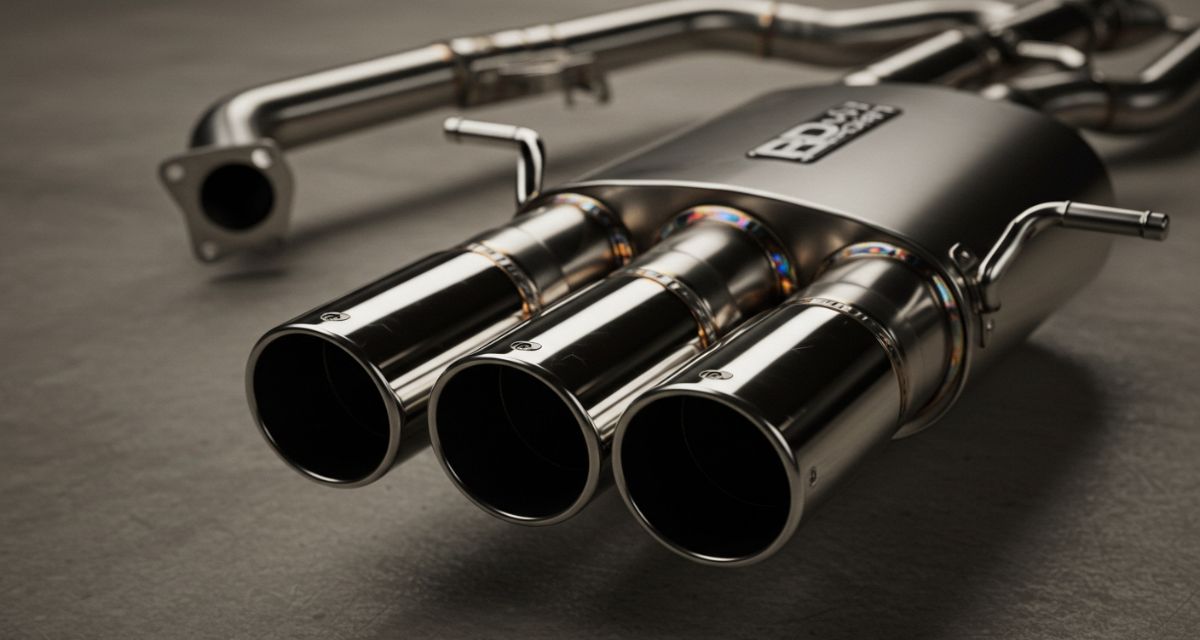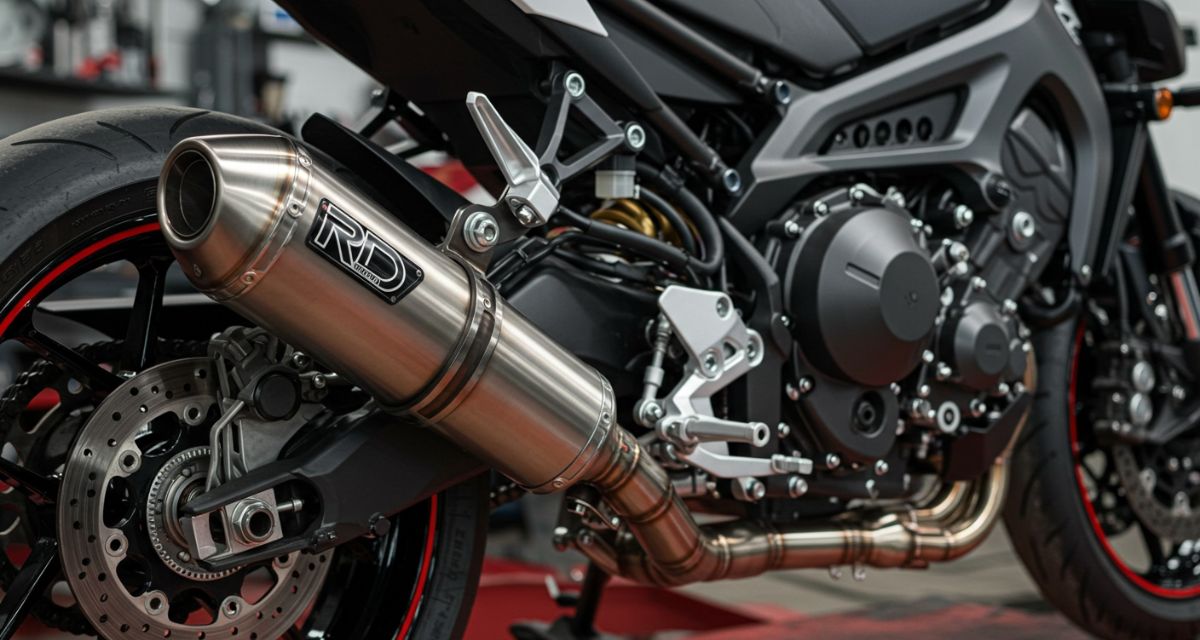Escapamento RD: Performance, Heritage, and Sound
The escapamento RD is much more than a simple exhaust system — it is a defining element of Yamaha’s iconic two-stroke RD motorcycles. Unlike standard pipes, it represents a careful balance of engineering, power, and tradition. Its expansion chamber design not only enhances power delivery but also creates the distinctive roar that riders link with freedom and adrenaline. Moreover, it transforms the motorcycle’s character, making the experience unique for each rider.
Whether you own an RD125 or the legendary RD350, choosing the right exhaust can significantly influence your ride. Modern enthusiasts, therefore, often decide between stock restorations, aftermarket upgrades, or custom-made options. As a result, the escapamento RD continues to represent more than performance — it remains the soul of the RD legacy.
1. Origins of the Escapamento RD and Yamaha’s RD Series
To truly appreciate the RD exhaust, it is necessary to revisit Yamaha’s “Race Developed” motorcycles of the 1970s. These bikes were built on two-stroke innovation, and therefore, the exhaust system was central to their performance. Unlike a decorative feature, it determined acceleration, torque, and the motorcycle’s signature sound.
As the RD gained global popularity, particularly in Brazil, Europe, and Asia, exhaust modifications became a cultural movement. Riders not only tuned their bikes for speed but also expressed individuality through sound. Consequently, the escapamento RD became both a mechanical necessity and a cultural symbol of freedom and performance.
2. Technical Function of the Escapamento RD
2.1 Expansion Chamber Design
In a two-stroke engine, the expansion chamber is essential. It uses reflected pressure waves to recycle fuel-air mixture, and therefore, it boosts both efficiency and horsepower. The geometry — including length, diameter, and curvature — directly impacts whether the bike performs better at low, mid, or high RPMs.
2.2 Balancing Torque and Peak Power
-
A shorter, wider chamber favors high-RPM horsepower.
-
In contrast, a longer, narrower design increases mid-range torque, which makes it more practical for street use.
2.3 Heat, Noise, and Longevity
Besides shaping performance, the escapamento RD also regulates heat, manages noise, and improves durability. As a result, materials, welding precision, and silencer packing quality play crucial roles in determining the pipe’s lifespan and sound character.
3. Stock vs. Aftermarket RD Exhausts
3.1 Factory Yamaha RD Systems
Original Yamaha RD exhausts were designed to strike a balance between reliability, performance, and regulatory compliance. For this reason, collectors today value them highly for their authenticity and originality.
3.2 Performance & Aftermarket Options
Aftermarket exhausts, whether handmade or brand-specific, aim to unlock additional horsepower and sharper throttle response. For example, in Brazil, riders often select between “low–mid” pipes for everyday torque and “mid–high” systems for racing. With proper tuning, gains of 10–20% are realistic. However, these systems can be louder and may face legal restrictions.

3.3 Custom-Built Exhausts
Custom exhausts allow total personalization. Riders, therefore, design systems to match their specific goals — whether that is commuting, racing, or showcasing. In addition, custom pipes give complete control over performance, sound, and aesthetics.
4. Choosing the Right Escapamento RD
-
Confirm compatibility with your Yamaha RD model (RD125, RD250, RD350, etc.).
-
Match the exhaust to your riding habits — city commuting, long touring, or racing.
-
Consider build quality: stainless steel, anti-rust coatings, and strong welds add durability.
-
Be prepared for carburetor and ignition adjustments, since tuning is often required.
-
Finally, select the sound that fits your style — from sharp racing notes to deeper growls.
5. Advantages and Limitations
Advantages
-
Noticeable power and torque improvements
-
Distinctive two-stroke sound identity
-
Faster throttle response and acceleration
-
Wide customization opportunities
-
Strong nostalgic and cultural importance
Drawbacks
-
May exceed legal sound limits
-
Requires frequent cleaning and maintenance
-
Incorrect tuning can shorten engine life
-
Premium handmade systems are expensive
-
Less practical for daily traffic riding
6. Maintenance Tips for Escapamento RD
-
Clean chambers frequently to avoid carbon deposits.
-
Inspect welds and joints for cracks regularly.
-
Apply protective coatings to resist rust.
-
Replace silencer packing when performance or sound weakens.
-
Check alignment and secure all mounts tightly.
-
Finally, always tune the carburetor after changes to preserve engine health.
7. The Escapamento RD in Today’s Motorcycle Culture
Although strict emissions laws have nearly ended mass production of two-strokes, the escapamento RD still thrives in restoration projects and custom builds. Today, online forums, enthusiast clubs, and motorcycle events continue to celebrate its unique sound. In fact, the raspy two-stroke roar has become an unmistakable cultural symbol. Therefore, riding an RD equipped with its iconic exhaust feels like reliving a golden age of motorcycling.
8. Conclusion
The escapamento RD is more than a mechanical component — it is a bridge between performance, heritage, and passion. From the compact RD125 to the powerful RD350, the exhaust dictates how the motorcycle performs, how it sounds, and how it connects with the rider. Consequently, selecting the right setup and maintaining it carefully allows any RD to remain a true legend on the road.
FAQs
1. What does escapamento RD mean?
It refers to the specialized exhaust system used in Yamaha’s two-stroke RD motorcycles.
2. Does an upgraded RD exhaust improve performance?
Yes. With correct tuning, riders can gain between 10–20% more power.
3. Are aftermarket RD pipes street-legal?
This depends on local laws. Some designs may exceed noise or emission limits.
4. Is rejetting required after installing a new exhaust?
Almost always. Rejetting ensures the right fuel-air mix and prevents engine damage.
5. How do stock and aftermarket exhausts differ?
Stock systems focus on balance and compliance, whereas aftermarket versions target maximum performance and a more aggressive tone.



